How to Start a Social Media Marketing Agency in 2024
You know social media marketing inside and out. You’ve mastered social media campaigns and adapted to algorithm shifts, and now you’re ready for the next step: your own agency.
It’s a significant step, but one you can prepare for effectively.
In this article, you’ll find a step-by-step guide to starting a successful social media marketing agency.

Manage all your social media accounts in one place.
Craft, schedule, & auto-post content to all your social channels, then track analytics and manage interactions from a single, easy-to-use dashboard.
11 steps to start a social media marketing agency
You want to start a social media marketing agency, but you may not be sure where to start. This 11-step guide will help you jumpstart your agency. Let’s dive in:
1. Determine your niche and services
Defining your niche and services is crucial for establishing your agency’s identity. Knowing exactly what you offer and who you’re serving helps you stand out in a crowded market and allows you to focus your marketing efforts more effectively.
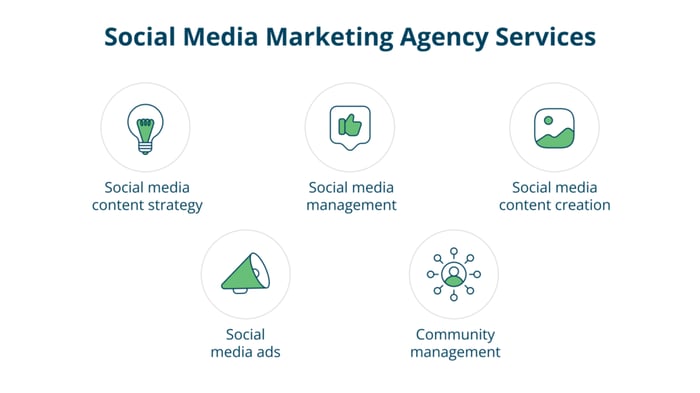
Start by asking yourself what niche you’re passionate about and what skills you have to add value to the social media market. Then, think about what services clients need the most and what are in high demand.
For example, according to Statista, by 2026, the global social media advertising market will increase to $358 billion. In 2023, it was at $270 billion.
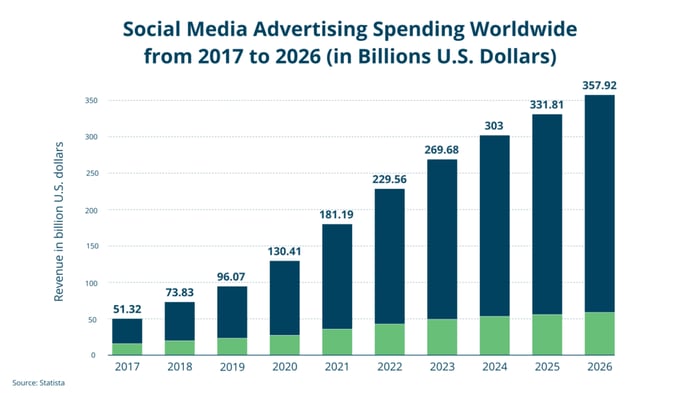
Imagine you have extensive experience in the pet care industry. You focus your social media marketing agency on serving pet care brands. This focus makes you an expert in a specific area rather than a generalist.
Social media marketing services you could offer as a social media agency:
- Social media content strategy involves planning what, when, and where to post. It’s the roadmap for your client’s social media presence.
- Social media management involves running the social media accounts day-to-day. You’ll post content, respond to comments, and engage with the target audience.
- Social media content creation is about making the actual posts. Depending on the client’s needs, this could be anything from tweets to TikToks.
- Community management is like social media management but more focused. You’ll engage with the community, manage forums, and keep the conversation going.
- Social media ads include creating advertising assets (like graphics and ad copy), launching ads, running A/B tests, analyzing results, and tweaking ads to improve profitability.
You could offer one or multiple services from the list if you have the skills and resources to meet your client’s needs.
2. Define your value proposition
Your value proposition quickly tells potential clients why they should choose your agency over others. A strong value proposition can set you apart in a crowded market and give clients an apparent reason to work with you.
Think about what makes your agency unique. Is it your expertise in a particular niche? Your innovative approach to social media marketing strategy? Or it’s your commitment to data-driven results.
Once you’ve identified your unique angle, craft a concise statement that encapsulates this. Make it clear, compelling, and focused on the benefits to the client.
3. Create your business model
A business model outlines your goals, strategies, and the steps you’ll take to achieve them. Without a plan, you’re flying blind, making it challenging to secure clients or investors.
Here’s how to do it:
- Start by outlining your agency’s mission and objectives
- Then, detail the services you’ll offer and identify your target market
- Next, lay out your marketing and sales strategies
- Don’t forget to include a financial plan that covers startup costs, pricing, and revenue projections
- Finally, set some milestones to help you track your progress
Let’s say your agency focuses on social media for local restaurants. Your business plan might include strategies for targeting restaurant owners through local SEO and community events.
You could set a milestone to secure three clients in the first quarter and aim for a 20% increase each subsequent quarter.
4. Choose your pricing strategy
Your pricing model affects your income and shapes client expectations and work process. Choosing the right model can make your life easier and your business more profitable.
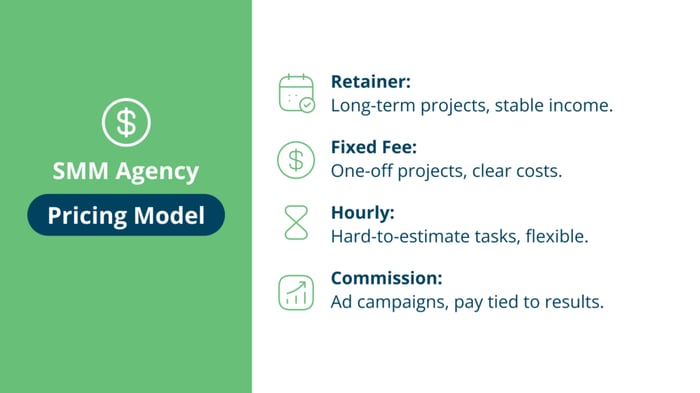
So, consider the projects you’ll be taking on and how you want to manage your cash flow. Then, pick a pricing structure that aligns with your business strategy and client needs.
- Retainer: Best for long-term projects where you have an ongoing relationship with the client. It provides a stable income and allows you to plan resources better.
- Fixed/flat fee: Ideal for one-off projects with a well-defined scope. Project-based pricing offers clear costs upfront, making it easier for clients to budget.
- Hourly: Use this for tasks that are hard to estimate regarding time and effort. It offers flexibility but can be harder for clients to budget for.
- Commission: Perfect for ad campaign management where your pay is tied to the campaign’s performance. This model can be lucrative but risky, as your income depends on results.
5. Set your prices
Setting the right price for your social media services is crucial for attracting clients while ensuring you profit. Price too low, and you’ll struggle to cover costs; price too high, and you might scare off potential clients.
First, calculate your costs, including overhead, tools, and labor. Then, research what competitors are charging for similar services.
Factor in your unique value proposition to find a pricing sweet spot that’s competitive yet profitable.
6. Build your online presence
An online presence is often the first point of contact between your agency and potential clients. A strong online presence can help you attract more clients, establish your brand, and showcase your expertise in the field.
First, you’ll need a solid website where you can list your services, show client testimonials, and appear as an expert in the field using a blog section.
You’ll also need to hop onto social media. Choose platforms where your potential clients are active. Then, share useful content, connect with people in the industry, and add value to online conversations.
7. Get a social media management software
Managing multiple clients’ social media accounts can quickly become a juggling act.
The solution?
Loomly, a social media management software.
With Loomly, you can manage all your client accounts in one place. It helps you save time, optimize your content, and improve results.
Here’s how to use Loomly to run all your client work smoothly:
Step 1: Sign up and set your first calendar details. Choose your calendar name (this can be your client’s or its brand name), time zone, and industry.
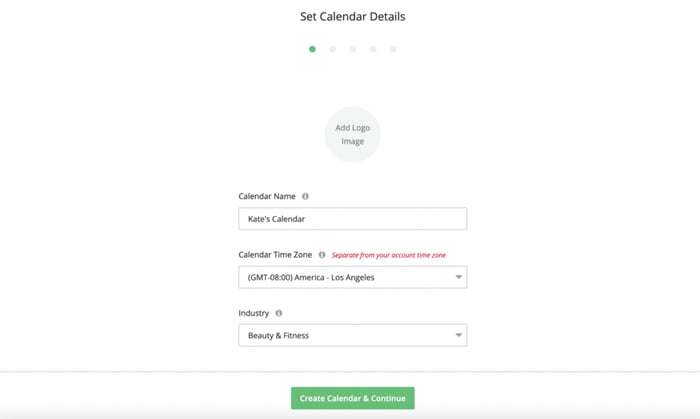
Step 2: Connect relevant social media accounts that you’d like to appear for this calendar.
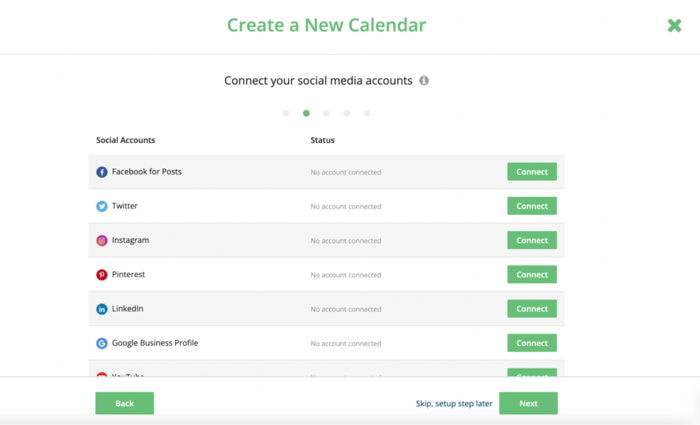
Step 3: Invite collaborators, a.k.a. your social media marketing agency team and your client. Doing so allows your team to collaborate on post drafts and submit content for approval.
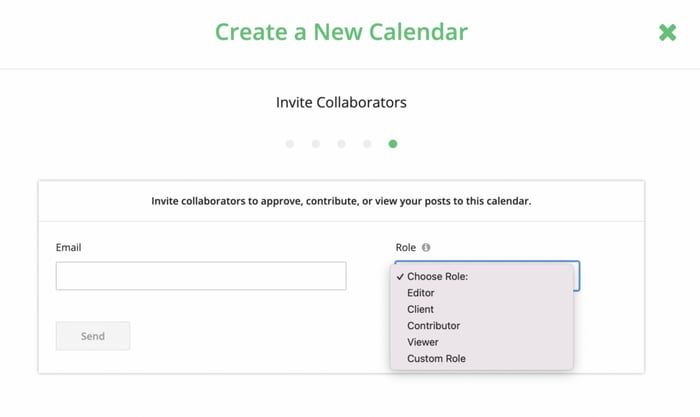
Step 4: Once your calendar is all set up, you can create a new post

If you need some inspiration, Loomly offers some post ideas. You can also build a new post from pre-saved custom post ideas, RSS feeds, holidays, or any other idea you have in the moment!
So, choose the day and time you’d like your post to go live and add a label so you can easily organize your posts.
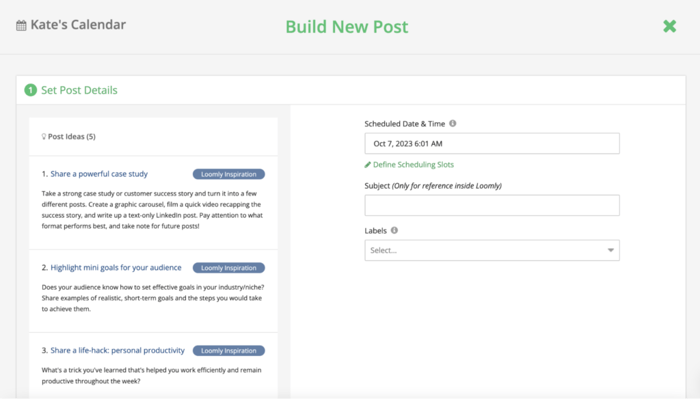
Next, you’ll need to choose the social media platforms you’d like your post to publish on. You can choose as many platforms as you’d like. Don’t worry about formatting; you can adjust your post for each platform later.
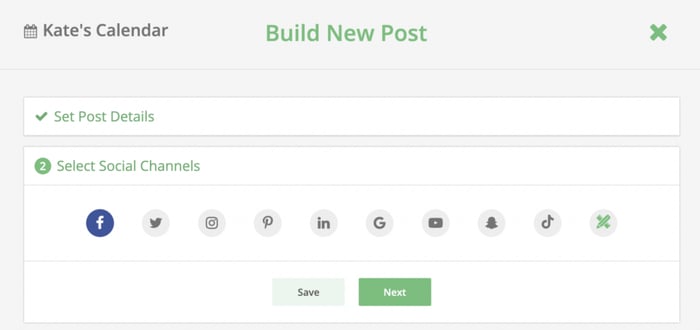
Now, add your social media copy and visuals to create the post. Once you hit “Next,” you can fine-tune your content for each social media channel.
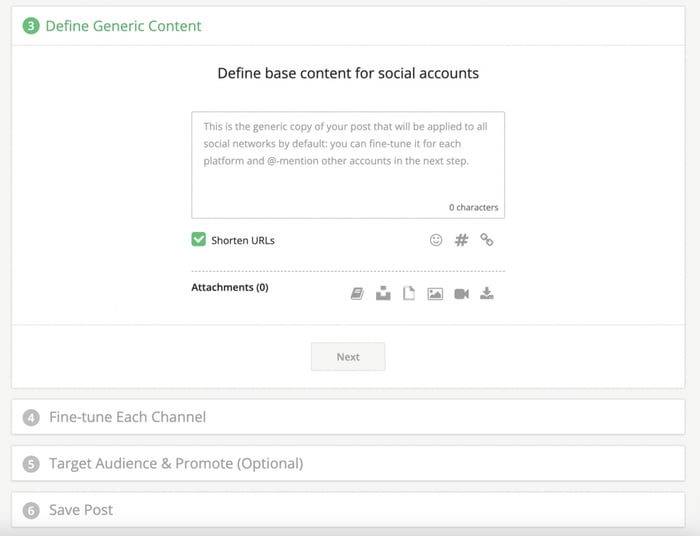
Once all set, you can edit your post, schedule it for automatic publishing, or publish it now.

Step 5: View your calendar
Your scheduled posts will appear in your calendar, giving you an overview of what’s scheduled for when.

Step 6: When you’re ready to add new clients, navigate to your dashboard. At the top left side of the dashboard, you’ll see all the calendars you have by far. Click the “Add New Calendar” button to add a new client calendar and connect their social media accounts.
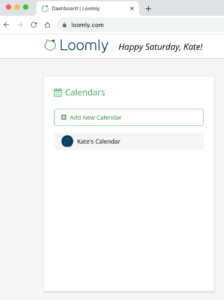
Step 7: Switching between clients (or calendar views) is quick with Loomly. From your calendar view, simply choose the calendar you’d like to review from the drop-down menu at the top left corner of the page.
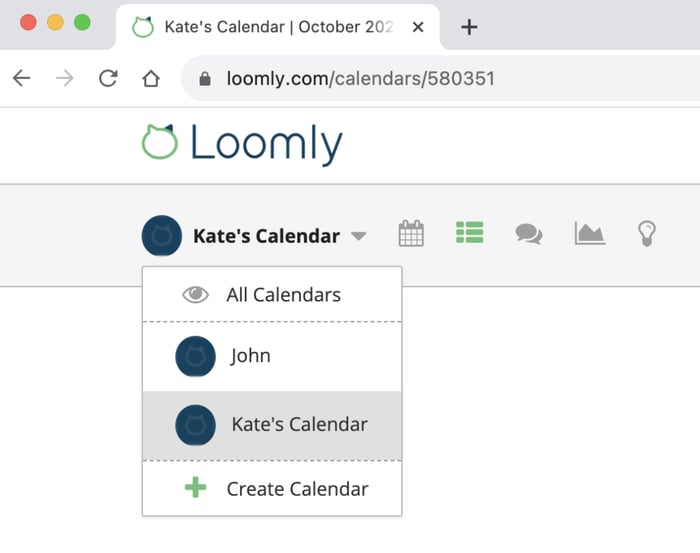
Picture this: You’ve got eight clients, each with multiple social media accounts. Without a tool like Loomly, you’d switch between tabs and platforms all day. With Loomly, you can see all your clients’ posts, schedules, and performance metrics in one dashboard.
8. Streamline your client onboarding system
A smooth onboarding process sets the tone for your relationship with a new client. It shows you’re organized, value their time, and are ready to get down to business.
Plus, it sets expectations from the get-go, so your client won’t wonder what comes next.
Here’s how to do it:
- Initial consultation: Start with a discovery call or meeting to understand the client’s needs and expectations.
- Proposal and contract: After the consultation, send a detailed proposal outlining the scope of work, timelines, and pricing. Once agreed upon, get that contract signed.
- Welcome packet: Send a welcome packet that includes an overview of your services, what the client can expect, and any initial questionnaires to help you get started.
- Account setup: If you’re using a tool like Loomly, now’s the time to set up their account, add them to the dashboard, and give them a quick tour.
- Kick-off meeting: Schedule a meeting to align on goals, introduce team members, and outline the next steps.
9. Build your team
The right mix of skills ensures you can offer comprehensive services and handle multiple clients efficiently.
To build an efficient social media team, you’ll need to identify the essential roles for your agency’s services. Once you know what you need, you can start recruiting.
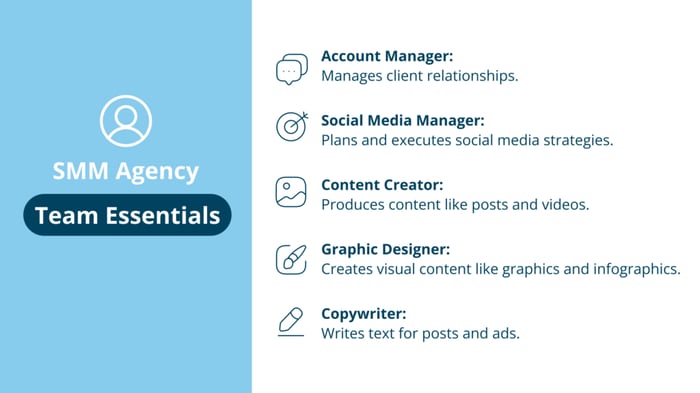
Here are some roles you’ll likely need.
- Account manager: Manages client relationships by being in direct contact with them. They get the assignments, clarify questions, and deliver the final drafts for approval.
- Social media manager: Plans, schedules, and executes social media strategies.
- Content creator: Produces content like posts and videos.
- Graphic designer: Creates visual content like graphics and infographics.
- Copywriter: Writes text for posts and ads.
10. Launch your agency
Launching your agency is your grand entrance into the market. It’s crucial for gaining initial traction and clients.
Before going live, ensure your website, social media profiles, and team are all set.
If everything’s alright, announce your launch through a press release, social media posts, and an email campaign to your mailing list (if you have one).
And don’t forget to leverage your network for that initial boost.
11. Pitch clients
After your launch, the next step is to start pitching to potential clients.
Use your network, social media, and even cold emails to get your first clients.
For best results, tailor each pitch to show how your services solve a specific problem for that client.
3 tips to run a successful social media marketing agency
Each tip will follow the structure:
- Why is it important
- How to do it
- Example/anecdote to illustrate the point
Keep an active social media presence
Keeping an active social media presence builds credibility and showcases your expertise.
So, to remain active, consistently post valuable content and engage with your audience in the comments section.
For example, if you’re great at video marketing, you could regularly share tips or quick how-to videos on your platforms.
Track your progress in a portfolio and turn it into social proof
A solid portfolio builds trust and shows prospective clients you can deliver results.
You can do so by documenting and sharing your successes on your website and social media.
For instance, you might share a before-and-after analysis snapshot after a successful campaign.
Listen to social conversations and engage with your audience
Listening to your target audience keeps you in tune with market needs and trends.
The comments section of your and your competitors’ social media is a great way to find what resonates with your audience.
Ready to start your own social media marketing agency?
You now have a step-by-step guide to navigate the complexities. But remember, the tools and strategies are just the start.
Your agency’s true value will come from understanding your client’s unique needs and exceeding their expectations. So, as you take these steps to start your agency, focus on building relationships, not just a client base.



